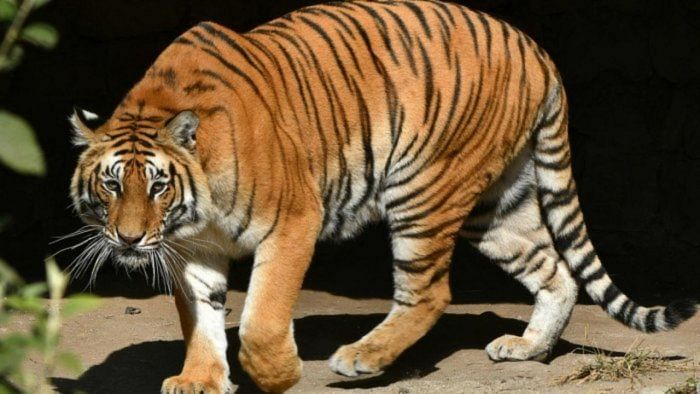
India’s latest tiger count is set to go well past the 3,000 mark, signalling a healthy growth of the apex predator in 53 tiger reserves, officials said on Friday, noting that Prime Minister Narendra Modi may make the announcement in a conference at Mysore next month to mark the 50th anniversary of the Project Tiger.
Thanks to the decades of experience gained in the Project Tiger, India now has inked a memorandum of understanding with Cambodia “on biodiversity conservation with special focus on tiger reintroduction in Cambodia.”
India and Cambodia signed the MoU with focus on tiger reintroduction in Cambodia in the presence of Vice President Jagdeep Dhankhar and Cambodian Prime Minister Hun Sen, tweeted Bhupender Yadav, Union Environment Minister.
“We’ve sent a delegation there, they’ve sent a delegation here. We are examining the situation in Cambodia to see if tiger translocation can be done,” said S P Yadav, member secretary, National Tiger Conservation Authority. There would be technical collaboration and knowledge transfer between the two sides before a decision on tiger translocation is taken.
While officials are tight-lipped about the outcome of the 2022 tiger census, sources said the number could even go past 3,500 considering the 6 per cent annual growth that was seen in all these years. Some of the tiger reserves like Corbett in Uttarakhand have a very high density of tigers.
The Union Environment Ministry began the all India tiger estimation nearly two decades ago following the embarrassing Sariska episode (vanishing of tigers in the Rajasthan forest) with the first estimate in 2006 revealing the presence of only 1,411 big cats.
Since then, there has been a steady rise in tiger numbers – 1,706 in 2010; 2,226 in 2014 and 2,967 in 2018 – because of which India harbours 70 per cent of the global wild tiger population.
On the conservation of elephant, another iconic species, officials said 100 accident prone areas along 1,800 km of railway tracks had been identified for mitigation measures to minimise the number of jumbo deaths after being hit by speeding trains.
The intervention measures that are being planned include creating ramps or underpasses and clearing of the sites for easier movement of the herd including the juveniles. Several sensitisation meetings have been conducted with the railway officials to reduce the numbers of jumbo deaths.
With the Project Elephant turning 30 in April, a major sensitisation exercise has been undertaken to reduce human-elephant conflicts, including an elephant ride for the President Droupadi Murmu at Kaziranga on April 7.
